“Glube’s gelatinous friends have gone missing! Explore TWO whole worlds to find them in this 3D, physics based, collect-a-thon, platformer, Glubelike!”
Our entry into the Dallas Society of Play 2023 “Glube Jam”. Glube Rolls is a fully 3D physics based collect-a-thon platformer where you play as Glube, a gelatinous cube, who is on a journey to save his kidnapped friends. Stumble around with awkward cube physics, swing from platform to platform with your gooey tentacles, and launch yourself to collect your friends and other amazing treasures. The game was made within the 14 day time limit by CarmenXero.
Technical Features:
- Custom physics based movement with forces, swinging, grappling, and launching
- Save system for level times, best times, and a changing hub world based on collectible status
- Implements Dialogue System and Tail Animator
Initial Development
At the start of the jam, we knew right away that this needed to a be a 3D platformer. We started by using the default character controller and environment from Easy Character Movement as a base. While the model provided by the Dallas Society of Play was already rigged and included several animations, we decided Glube needed to be much more random, squishy, and overall glubey. The model was re-rigged with additional bones and modifiers, we added some basic physics to his body using cloth simulation, and messed with it for awhile before we had something nice and gelatinous.

With Glube now as silly as possible, we wondered, could he get even more silly? The default character movement from the asset we used provided starting point but we knew that we needed to make something more unique if we wanted the game to be fun. Back to the drawing board, we looked for inspiration and fondly remembered the game “Glover” by Hasbro for the Nintendo 64. In “Glover”, you control a magic walking hand that rolls around a ball. There are other mechanics too, like bouncing the ball, magically transforming it into a bowling ball so its heavier, and much more. When considering all this, we decided the most fun came from just controlling the ball as you fight the physics of the world to maneuver it carefully. We didn’t want Glube to just roll like a ball though as that was a little too “sterile” in terms of the movement. We now realized we could indeed make him more silly by keep his cube shape for the rolling.

Now instead of smoothly rolling a ball, you are haphazardly stumbling around as the corners of Glube catch on things and his sides land flat. This adds a bit of randomness to his intended position when moving giving you something that’s much more satisfying to control. It also looks really, really funny.
Experimentation
With the core movement finished, we brainstormed ideas to make the gameplay even more interesting. Stumbling around was fun but there needed to be something “extra” to provide an additional challenge. Originally, Glube had a “launch” ability that let them stop mid air and build up a meter using the right mouse button. Letting go would launch them in the direction the camera was facing. As we began creating platformers for testing, it became real clear that no matter what you could just jump over the obstacle intended to be launched over. Solving this meant lowering Glube’s overall speed and jump height but that made them feel sluggish as he slowed down too much. They are not a slug. The solution was to do what every single game in the last year or two did; add a grappling hook!
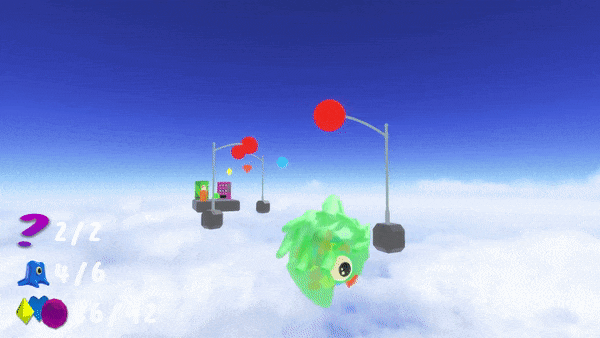
With this, Glube can not only keep their momentum and use it to fling themself farther but they can also build additional momentum! We also added a simple right click ability where they can retract the tentacles and bring themself closer to the grappled surface. At this point we decided Glube’s movement was perfect and now it was time to move on to designing mechanics, puzzles, collectibles, and well, the rest of the game.
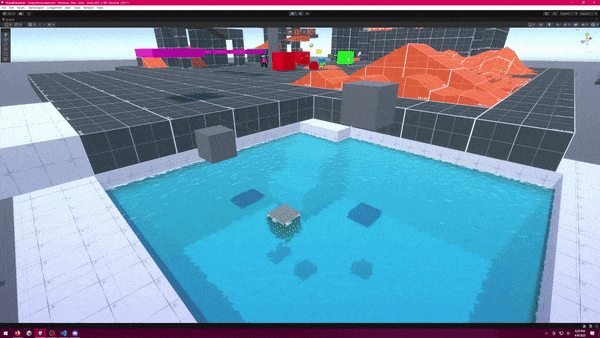
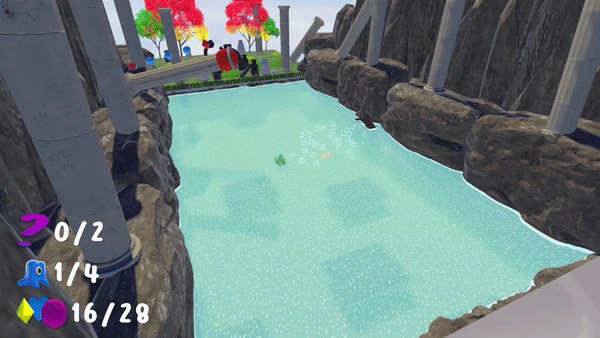
The floating platforms in Raging Ruins use a very simple buoyancy physics simulation. Objects in the water that are marked as “buoyant” get the top of the water’s surface and apply a damped acceleration force moving them upward in addition to having gravity applied. There’s a value to define the center of the object as well as a float modifier to help fine tune. In retrospect, we could’ve just used an animation or a simple script that just moves the object up and down. However, this was much more fun to play with! We planned on Glube being able to change their density, thus affecting floating platforms, but this idea was scrapped. We actually made a lot of mechanics that never saw the light of day either due to time constraints or simply an inability to naturally include them in a level.

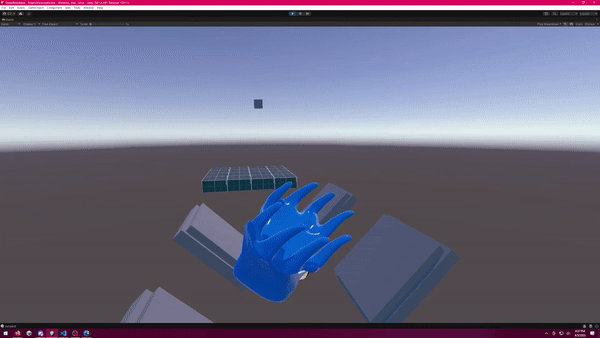
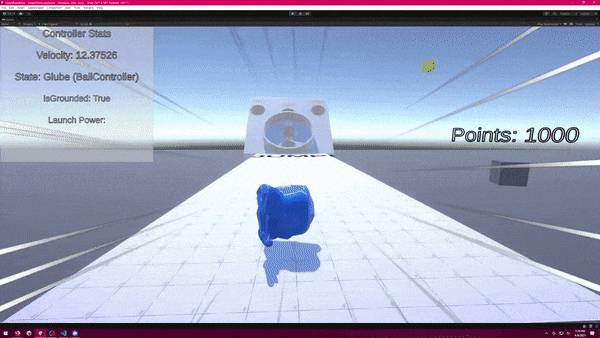
While some of these worked their way into the game somehow, such as the bouncepads, some complete systems were cut entirely. Due to our limited time, a third planned level called “Chaos Carnival” was cut. This would’ve included many carnival themed mechanics such as a Ferris wheel you could ride, slides to go down on, and an entire ticket system where you had to earn tickets to progress. Part of this involved a giant skeeball game where Glube was the ball!
Content

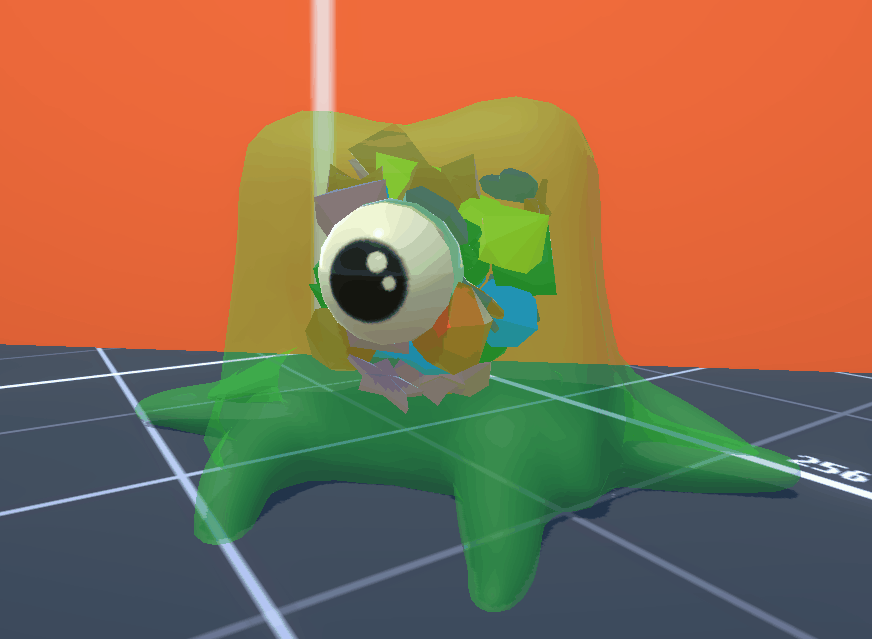
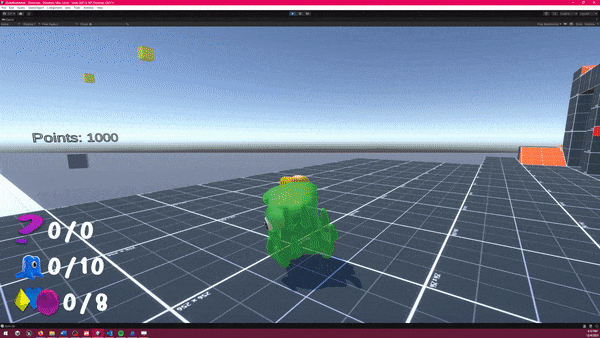
As for the collectibles, who doesn’t like collecting gems? Especially when they’re coded to have a random mesh and color every time you play. Glube sure does love them, which is why collecting them makes them appear inside of them! This scales based on how many collectibles are in a level; the more there are, the smaller the ones inside of Glube are. In addition to these, Glube has to rescue his friends. Upon doing so, you’ll be shown their unique name as they blast off into the sky back to the safety of the hub world. Now that we had great movement, fun collectibles, and interesting mechanics, we moved on to making the levels themselves.
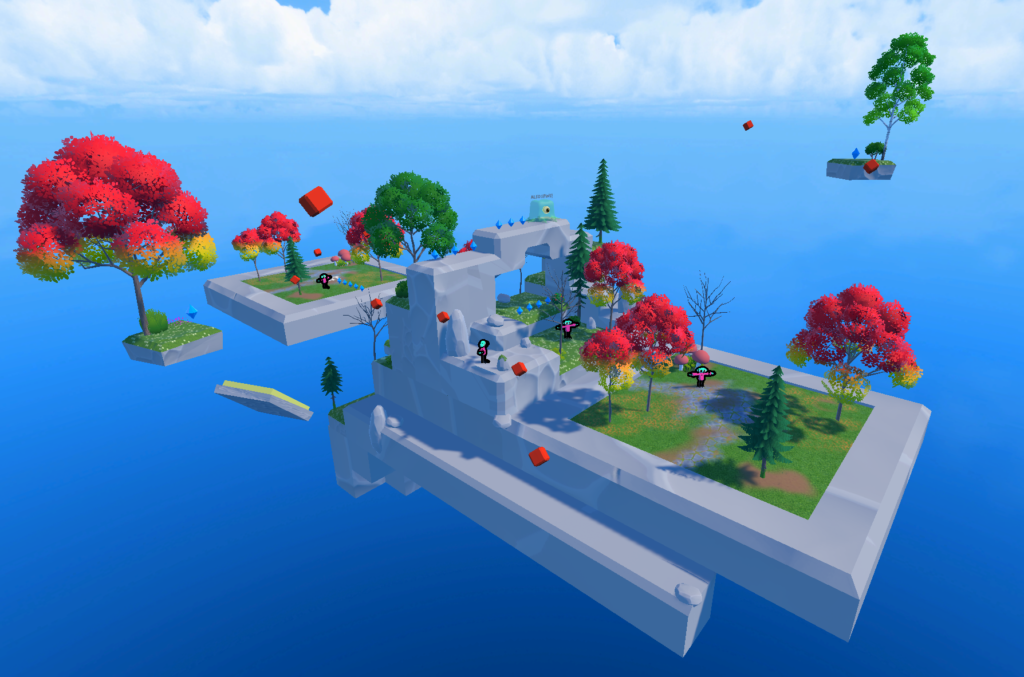
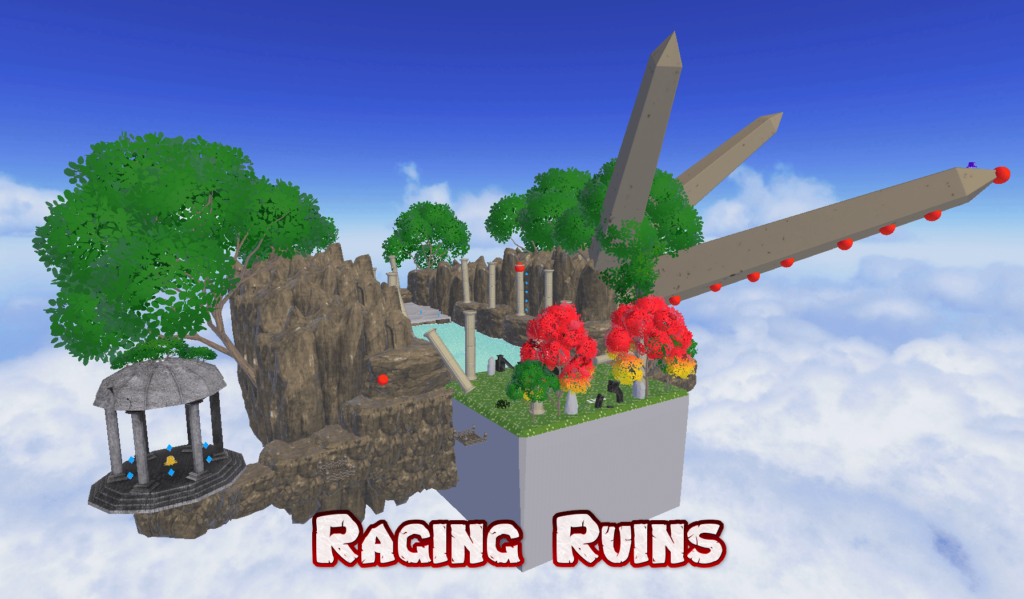
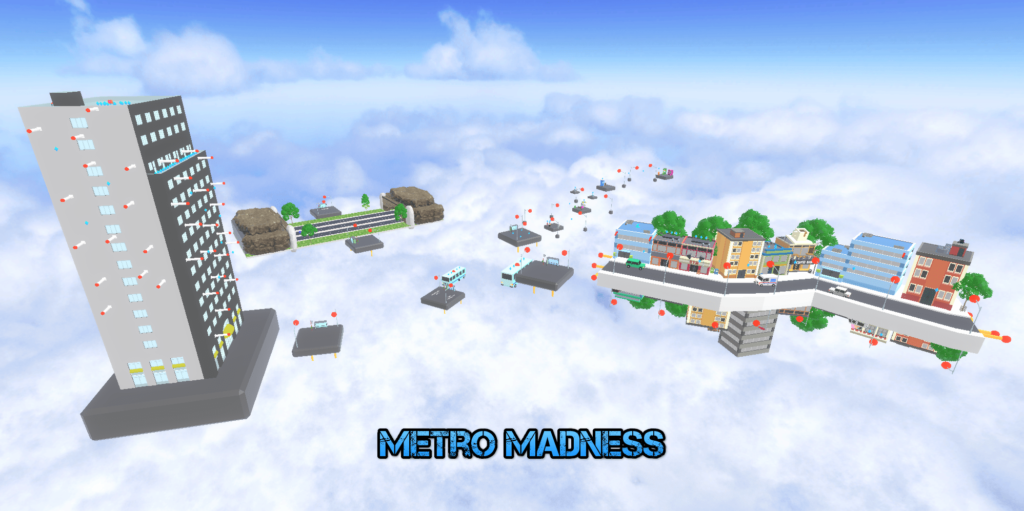
We were able to make a hub world and three themed levels; Tutorial Land, Raging Ruins, and Metro Madness. Taking inspiration from other 3D platformers, particularly Glover, we went all in on themed worlds. Tutorial Land features our the assistant NPC named “Coley” who tells you how to play the game and gives you a safe playground to experiment with. Raging Ruins is the easiest of the two main levels, providing some basic platforming challenge and a simple water puzzle. Metro Madness is the more difficult level, with many moving platforms and more places to mess up. It also features the scariest thing the human mind can comprehend; traffic! All of these levels were made in just a few days, using a mix of pre-existing assets as well as many custom ones:
- Fantasy Adventure Environment
- Yughues Free Pillars and Columns
- AZURE Nature
- AllSky
- Simple Town
- CITY Package

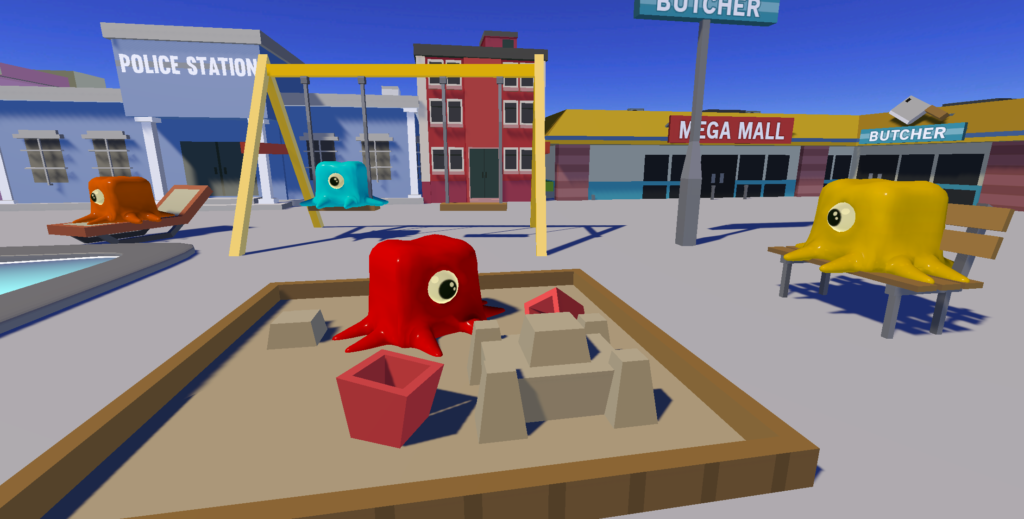
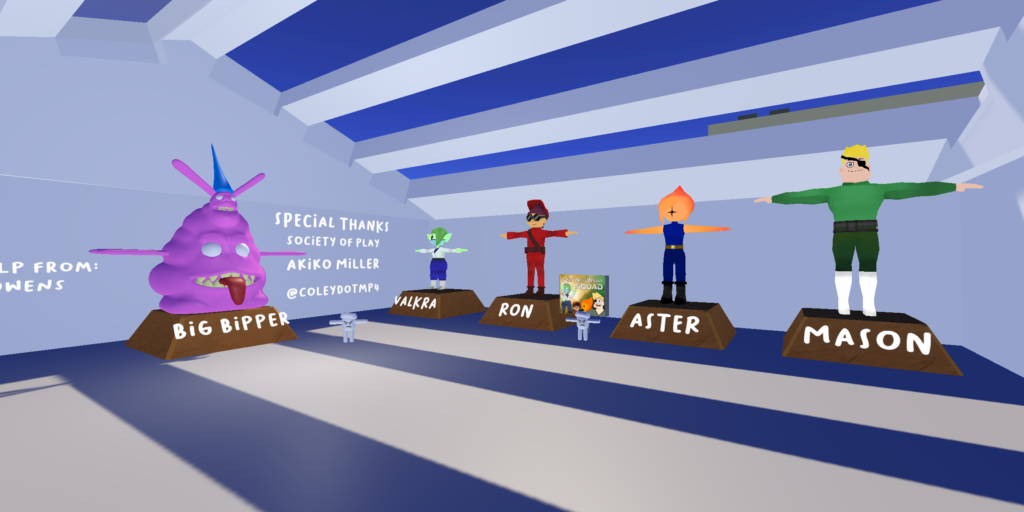
The hub world features all of the Glubes you’ve rescued with a simple unique piece of dialog each. You also have access to the portals for each of the two levels that you can select in any order. In addition to all of these, there is also a Museum where you can check out bonus content! Some of that includes a few cut features mentioned above alongside the cut boss battle with the villain “Big Bipper”. He was cut due to time constraints, but it would’ve consisted of Glube using their tentacles to grapple around an arena, collect swords, and smack into him to damage him. You also get to view the crew the from our other game One Way Warp Squad in their full low poly glory…provided you found them in each world as they are each a secret collectible!


Along your journey you’ll come across two NPCs; Glove Guy and Coley. Glove Guy gives you some basic life advice and information. As for Coley, they exist more as the game’s tutorial. They are an original character belonging to our friend coleydotmp4. We enjoyed their design so much we made an original model just for them in a day using Blender. They proved to be a very fitting addition to the game.
Original Soundtrack
Between doing all the programming, art, design, and endless playtesting we decided we wanted to have an original soundtrack just like we did for One Way Warp Squad. Unlike with that one, we didn’t have as much time to sit around and ponder our place in the universe over several sessions with a synthesizer. This time we opted to quickly make some themed tracks using Garageband for creating the music and FL Studio for mastering and editing. The soundtrack is made entirely from samples and loops. You can listen to the soundtrack on your preferred streaming service via this link or preview it from Spotify in the embed below:
Closing Thoughts
When we made our first game jam game One Way Warp Squad, we were so new to the process we experienced challenges on every single possible front. How do we make a character controller? How do we make characters in Blender and animate them? Whats the best way to make multiple endings and what do I use to animate them? How do ladders work?! We had to figure out what we wanted to design and then spend a lot of time figuring out how to make it. With Glube, we were much more experienced so the technical side of things was much more streamlined and relaxed. For example, the grappling hook was a last minute addition in our design process but it only took a few hours to implement. Most of our challenges arose when it came to the creative design of the gameplay rather than the technical. Instead of being forced to work with limitations, we were able to make just about whatever we wanted and it was more a matter of “Is it fun?” rather than “How does it work?” This feeling was very new to us but we rolled with it (no pun intended). It allowed us to make good decisions, such as not using music libraries and instead making our own music. It would’ve been easy to just use any stock music but making our own let us better communicate the mood the player should be in when in our worlds. Spending more time on “what is fun” rather than “how do we program a character controller” was very new for us. At times it was confusing, making a bunch of mechanics but no idea how to implement them but eventually we figured it out by just throwing things at the wall and seeing what stuck. (Yes, we did consider making Glube literally stick to walls.)
Hitting the submission button for a game jam always feels like a gamble no matter how sure you are. Was that the right version? Were there bugs we left in on accident? Will people even play it? After all this was how people were going to see what we’re made of, all teetering on whether or not the executable even runs correctly. We wondered if that even mattered, as ultimately the purpose of a game jam is to challenge yourself and to make something you can have fun with. We were already proud of the fact we shipped a fairly complete game with smooth movement, few bugs, menu/settings/save system, and progression. So for all we knew, we were finished with the jam and already accepting of our conclusions. When it came time for the Show n’ Play, where everyone gathers in a voice call to discuss their game and showcase it, we were surprised to hear everyone else enjoyed our game too! It was a massive relief to hear that so many people enjoyed playing it with complements on all fronts, especially with how fun the movement was.